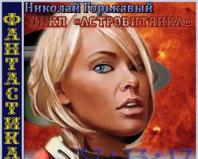Fire in zero gravity burns completely differently than on earth - scientists have encountered a strange phenomenon. How does fire burn in zero gravity? Does a candle burn in zero gravity?
The FLEX experiment, carried out on board the International Space Station, gave unexpected results - the open flame behaved completely differently than scientists expected.
As some scientists like to say, fire is the oldest and most successful chemical experiment humanity. Indeed, fire has always been with humanity: from the first fires on which meat was fried, to the flame of the rocket engine that brought man to the moon. By by and large, fire is a symbol and instrument of progress of our civilization.

The difference in flame on Earth (left) and in zero gravity (right) is obvious. One way or another, humanity will again have to master fire - this time in space.
Dr. Forman A. Williams, a professor of physics at the University of California, San Diego, has long worked on the study of flame. Usually fire is a very complex process thousands of interconnected chemical reactions. For example, in a candle flame, hydrocarbon molecules evaporate from the wick, are broken down by heat, and combine with oxygen to produce light, heat, CO2, and water. Some of the hydrocarbon fragments, in the form of ring-shaped molecules called polycyclic aromatic hydrocarbons, form soot, which can also burn or turn into smoke. The familiar teardrop shape of a candle flame is given by gravity and convection: hot air rises up and draws fresh into the flame cold air, due to which the flame stretches upward.
But it turns out that in zero gravity everything happens differently. In an experiment called FLEX, scientists studied fire on board the ISS to develop technologies for extinguishing fires in zero gravity. The researchers ignited small bubbles of heptane inside a special chamber and watched how the flame behaved.
Scientists have encountered strange phenomenon. In microgravity conditions, the flame burns differently; it forms small balls. This phenomenon was expected because, unlike flames on Earth, in weightlessness oxygen and fuel are found in thin layer on the surface of the sphere, This simple circuit, which is different from earthly fire. However, a strange thing was discovered: scientists observed the continued burning of fireballs even after, according to all calculations, the burning should have stopped. At the same time, the fire went into the so-called cold phase– it burned very weakly, so much so that the flame could not be seen. However, it was a fire, and the flame could instantly erupt with great strength in contact with fuel and oxygen.
Typically a visible fire burns when high temperature between 1227 and 1727 degrees Celsius. Heptane bubbles on the ISS also burned brightly at this temperature, but as the fuel ran out and cooled, a completely different combustion began - cold. It takes place at a relatively low temperature of 227-527 degrees Celsius and produces not soot, CO2 and water, but the more toxic carbon monoxide and formaldehyde.
Similar types of cold flame have been reproduced in laboratories on Earth, but under gravitational conditions such fire itself is unstable and always quickly dies out. On the ISS, however, a cold flame can burn steadily for several minutes. This is not a very pleasant discovery, since cold fire poses an increased danger: it ignites more easily, including spontaneously, it is more difficult to detect and, moreover, it releases more toxic substances. On the other hand, the opening may find practical use, for example, in HCCI technology, which involves igniting fuel in gasoline engines not from spark plugs, but from a cold flame.
Fire in zero gravity September 12th, 2015
On the left is a candle burning on Earth, and on the right is in weightlessness.
Here are the details...
An experiment carried out on board the International space station, gave unexpected results - the open flame behaved completely differently than scientists expected.
As some scientists like to say, fire is the oldest and most successful chemical experiment of mankind. Indeed, fire has always been with humanity: from the first fires on which meat was fried, to the flame of the rocket engine that brought man to the moon. By and large, fire is a symbol and instrument of progress of our civilization.
Dr. Forman A. Williams, a professor of physics at the University of California, San Diego, has long worked on the study of flame. Typically, fire is a complex process of thousands of interconnected chemical reactions. For example, in a candle flame, hydrocarbon molecules evaporate from the wick, are broken down by heat, and combine with oxygen to produce light, heat, CO2, and water. Some of the hydrocarbon fragments, in the form of ring-shaped molecules called polycyclic aromatic hydrocarbons, form soot, which can also burn or turn into smoke. The familiar teardrop shape of a candle flame is given by gravity and convection: hot air rises and draws fresh cold air into the flame, causing the flame to stretch upward.
But it turns out that in zero gravity everything happens differently. In an experiment called FLEX, scientists studied fire on board the ISS to develop technologies for extinguishing fires in zero gravity. The researchers ignited small bubbles of heptane inside a special chamber and watched how the flame behaved.
Scientists have encountered a strange phenomenon. In microgravity conditions, the flame burns differently; it forms small balls. This phenomenon was expected because, unlike fire on Earth, in weightlessness oxygen and fuel occur in a thin layer on the surface of the sphere. This is a simple pattern that differs from fire on Earth. However, a strange thing was discovered: scientists observed the continued burning of fireballs even after, according to all calculations, the burning should have stopped. At the same time, the fire entered the so-called cold phase - it burned very weakly, so much so that the flame could not be seen. However, it was a combustion, and the flame could instantly burst into flames with great force upon contact with fuel and oxygen.
Typically visible fire burns at a high temperature between 1227 and 1727 degrees Celsius. Heptane bubbles on the ISS also burned brightly at this temperature, but as the fuel ran out and cooled, a completely different combustion began - cold. It takes place at a relatively low temperature of 227-527 degrees Celsius and produces not soot, CO2 and water, but the more toxic carbon monoxide and formaldehyde.
Similar types of cold flame have been reproduced in laboratories on Earth, but under gravitational conditions such fire itself is unstable and always quickly dies out. On the ISS, however, a cold flame can burn steadily for several minutes. This is not a very pleasant discovery, since cold fire poses an increased danger: it ignites more easily, including spontaneously, it is more difficult to detect and, moreover, it releases more toxic substances. On the other hand, the discovery may find practical application, for example, in HCCI technology, which involves igniting fuel in gasoline engines not from candles, but from a cold flame.
Many physical processes proceed differently than on Earth, and combustion is no exception. A flame behaves completely differently in zero gravity, taking on a spherical shape. The photo shows the combustion of an ethylene droplet in air under microgravity conditions. This photo was taken during an experiment to study the physics of combustion in a special 30-meter tower (2.2-Second Drop Tower) at the Glenn Research Center, created to reproduce the conditions of microgravity during free fall. Many experiments that were later carried out on spacecraft underwent preliminary testing in this tower, which is why it is called “a gateway to space”.
The spherical shape of the flame is explained by the fact that in conditions of weightlessness there is no upward movement of air and convection of its warm and cold layers does not occur, which on Earth “pulls” the flame into the shape of a drop. There is not enough inflow of flame to burn fresh air, containing oxygen, and it turns out smaller and not as hot. The yellow-orange color of the flame, which is familiar to us on Earth, is caused by the glow of soot particles that rise upward with a hot stream of air. In zero gravity, the flame acquires a blue color, because little soot is formed (this requires a temperature of more than 1000 ° C), and the soot that exists will glow only in the infrared range due to the lower temperature. In the top photo there is still a yellow-orange color in the flame, since the early stage of ignition was captured, when there is still enough oxygen.
Combustion studies under microgravity conditions are especially important for ensuring the safety of spacecraft. Fire suppression experiments (FLEX) have been carried out for several years in a special compartment on board the ISS. The researchers ignite small droplets of fuel (such as heptane and methanol) in a controlled atmosphere. A small ball of fuel burns for approximately 20 seconds, surrounded by a sphere of fire with a diameter of 2.5–4 mm, after which the droplet decreases until either the flame goes out or the fuel runs out. The most unexpected result was that a drop of heptane, after visible combustion, entered the so-called “cold phase” - the flame became so weak that it could not be seen. And yet it was combustion: fire could instantly flare up when interacting with oxygen or fuel.
As the researchers explain, when normal combustion the flame temperature fluctuates between 1227°C and 1727°C - at this temperature in the experiment there was visible fire. As the fuel burned, a "cold burn" began: the flame cooled to 227–527 °C and produced not soot, carbon dioxide and water, but more toxic materials - formaldehyde and carbon monoxide. During the FLEX experiment, the least flammable atmosphere was also selected based on carbon dioxide and helium, which will help reduce the risk of spacecraft fires in the future.
For combustion and flame on Earth and in zero gravity, see also:
Konstantin Bogdanov “Where is the dog buried?” - "5. What is fire? .
Janash Bannikov
Many of those who watched the cult American film " Star Wars", they still remember the impressive footage with explosions, tongues of flame, burning debris flying in all directions... Could such a terrible scene be repeated in real space? In a space completely devoid of air? To answer this question, let’s first try to figure out how an ordinary candle will burn on a space station.
What is combustion? This chemical reaction oxidation with release large quantity heat and the formation of hot combustion products. The combustion process can only occur in the presence of a combustible substance, oxygen, and provided that oxidation products are removed from the combustion zone.
Let's see how the candle works and what exactly burns in it. A candle is a wick twisted from cotton threads, filled with wax, paraffin or stearin. Many people think that the wick itself burns, but this is not so. It is the substance around the wick, or rather its vapor, that burns. The wick is needed so that the wax (paraffin, stearin) melted from the heat of the flame rises through its capillaries into the combustion zone.
To test this, you can conduct a small experiment. Blow out the candle and immediately bring the burning match to a point two or three centimeters above the wick, where the wax vapor rises. They will flare up from the match, after which the fire will fall onto the wick and the candle will light again (for more details, see).
So, there is a flammable substance. There is also quite enough oxygen in the air. What about the removal of combustion products? There are no problems with this on earth. The air, heated by the heat of a candle flame, becomes less dense than the cold air surrounding it and rises upward along with the combustion products (they form a tongue of flame). If the combustion products, which are carbon dioxide CO 2 and water vapor, remain in the reaction zone, the combustion will quickly stop. It is easy to verify this: place a burning candle in a tall glass - it will go out.
Now let’s think about what will happen to a candle on a space station, where all objects are in a state of weightlessness. The difference in density of hot and cold air will no longer cause natural convection, and through for a short time there will be no oxygen left in the combustion zone. But an excess of carbon monoxide (carbon monoxide) CO is formed. However, for a few more minutes the candle will burn, and the flame will take the shape of a ball surrounding the wick.
It is equally interesting to know what color the candle flame will be on the space station. On the ground, it is dominated by a yellow tint, caused by the glow of hot soot particles. Typically, fire burns at a temperature of 1227-1721 o C. In weightlessness, it was noticed that as the combustible substance is exhausted, “cold” combustion begins at a temperature of 227-527 o C. Under these conditions, a mixture of saturated hydrocarbons in the wax releases hydrogen H2, which gives the flame a bluish tint.
Has anyone lit real candles in space? It turns out that they lit it - in orbit. This was first done in 1992 in the experimental module of the Space Shuttle, then in spaceship NASA Columbia, in 1996, the experiment was repeated at the Mir station. Of course, this work was not done out of simple curiosity, but in order to understand what consequences a fire on board the station could lead to and how to deal with it.
From October 2008 to May 2012, similar experiments were carried out under a NASA project on the International Space Station. This time the astronauts examined flammable substances in an isolated chamber at different pressures and different oxygen content. Then “cold” combustion was established at low temperatures.
Let us recall that combustion products on earth are, as a rule, carbon dioxide and water vapor. In weightlessness, under combustion conditions at low temperatures, highly toxic substances are released, mainly carbon monoxide and formaldehyde.
Researchers continue to study combustion in zero gravity. Perhaps the results of these experiments will form the basis for the development of new technologies, because almost everything that is done for space, after some time, finds application on earth.
Now we understand that director George Lucas, who directed Star Wars, still made a big mistake in depicting the apocalyptic explosion of a space station. In fact, the exploding station will appear as a short, bright flash. After it, a huge bluish ball will remain, which will go out very quickly. And if suddenly something really lights up at the station, you need to immediately automatically turn off the artificial air circulation. And then the fire will not happen.
Wax- opaque, greasy to the touch, solid mass that melts when heated. Consists of esters of fatty acids of plant and animal origin.
Paraffin- a waxy mixture of saturated hydrocarbons.
Stearin- a waxy mixture of stearic and palmitic acids with an admixture of other saturated and unsaturated fatty acids.
Natural convection- the process of heat transfer caused by the circulation of air masses when they are unevenly heated in a gravitational field. When the lower layers heat up, they become lighter and rise, and the upper layers, on the contrary, cool, become heavier and sink down, after which the process is repeated again and again.
Why does combustion occur at all? When heated organic matter above a certain threshold value - the ignition temperature - their active reaction with atmospheric oxygen begins.
The main composition of atoms in organic substances is carbon (C) and hydrogen (H). Carbon combines with oxygen to form carbon dioxide (CO2), and hydrogen forms water (H20). The reaction, in turn, releases heat, which ensures its continuation. Thus, for combustion to occur in principle, two conditions are needed:
1) so that the ignition temperature is less than the combustion temperature
2) provide a sufficient flow of oxygen to continue the reaction.
Why does the candle flame point upward? During combustion, the air heated by the flame rushes upward (remember physics? Warm air is lighter, so it rises. More precisely, it is displaced by colder, and therefore heavier.) Cold air, containing more oxygen, flows into the place vacated by warm air. Obviously, if you cover a candle, for example, glass jar, then the candle will go out quickly enough - as soon as all the oxygen reacts. By the way, one more interest Ask. Why, although carbon dioxide is invisible, and water vapor is visible only when there is a lot of it, we can clearly see the flame of a candle? We see heated particles of unburned matter. Precisely those that form soot (soot). We can see it if we hold, for example, a spoon over the flame.
Now, finally, we return to our sheep. That is, to the question of whether a candle will burn in zero gravity. Obviously, the question arose based on the reasoning that since there is no gravity, then warm air will not be replaced by cold air, and problems will begin with the influx of oxygen. However, here thermal motion comes to the rescue. Heated molecules of carbon dioxide and water vapor move several times faster than oxygen molecules, which can, in principle, allow a candle to burn. So, to summarize, we conclude. In principle, a candle can burn, although it is weak.
By the way, Albert Einstein once asked this question, and he himself answered in the negative. No air flow, no combustion. But experience has proven otherwise.
http://evolutsia.com/content/view/3057/40/




